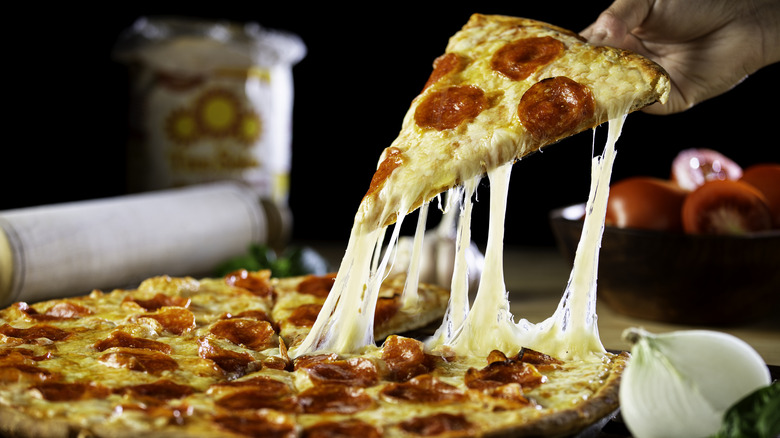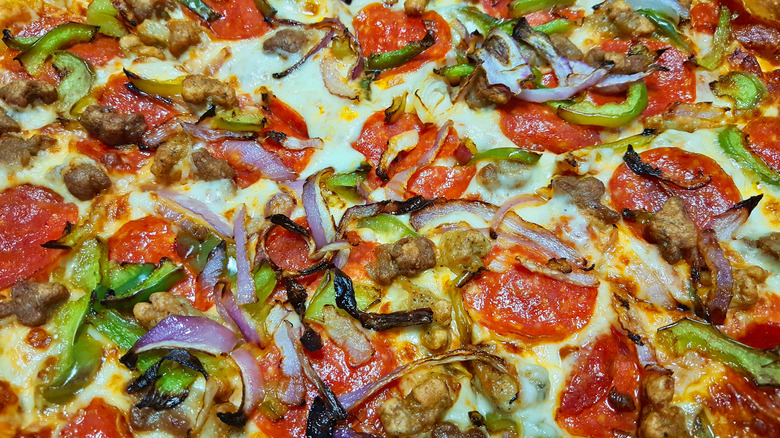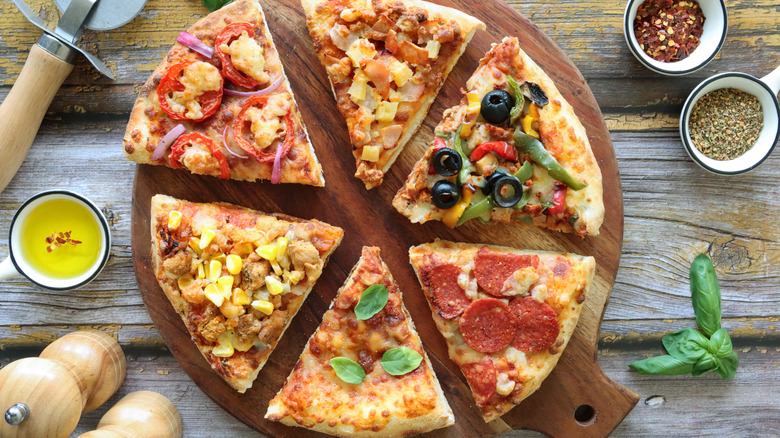When It Comes To Pizza Toppings, Less Is More
Everyone has their own favorite combination of pizza toppings, whether that be simple pepperoni or something like anchovy, olive, and onion (heck, Martha Stewart's pizza of choice involves peas, ricotta, and mozzarella). But while there are all sorts of pizza toppings available around the world, there's one universal rule with them that perhaps not enough people follow: Less is more.
As Chef Melissa Rodriguez of Mel's Pizzeria in New York City makes clear, ratios are kind of the key here. "If you have too much sauce or too much cheese, to me it starts to feel clunky [and] hard to eat," she says. You might love sauce, or cheese, or toppings, or crust, and that's totally fair — but if you add too much of one at the expense of the others, you're in for a bad time. As Rodriguez says, the important thing is that when it comes to one ingredient you're in love with, you should "try to restrain yourself. You will end up with a more balanced pizza that is easy and delightful to eat."
Too many toppings can make your pizza a challenge to eat
The issue here isn't so much flavor — if you like cheese more than sauce, you're naturally going to enjoy a stronger cheese taste — as it is structural integrity. Putting too much of anything onto the pizza, whether it be sauce, cheese, or toppings, is going to lead to your pizza falling apart before you can eat it. As Rodriguez points out, "You end up with bites that give you all of one of the ingredients or that all slide off of the pizza instead of into your mouth." Cheese may be delicious, but pizza lovers still generally prefer a complete bite to one giant honk of melted cheese or a pure block of anchovy.
Crust thickness does matter here, though. Rodriguez concedes thicker doughs like focaccia or grandma pie will naturally be able to hold up to more toppings, both in total amount and in variety, than something like a Neapolitan-style pizza. But you still shouldn't view a thicker crust as license to completely throw out the idea of a coherent ratio.
The right ratio of toppings has a considerable effect on cooking evenness
Nevertheless, while crust thickness has an effect, Rodriguez believes it's the ratio and cook of the pizza itself that matters more. "If any of [your pizza] is not cooked nicely or is raw or undercooked the integrity of your dough kind of loses and then the amount of ingredients start to really matter," she says. It makes sense; for a truly great pizza, every part of it has to be cooked evenly. This isn't even getting into the fact that different pizza toppings cook at different rates, meaning piling all of one on can mess with how well the whole thing is cooked in all sorts of ways.
It's easy to understand why you might want to load up on something you really love when it comes to pizza. It's just as important, though, to forego that temptation in order to achieve a more balanced end product.


